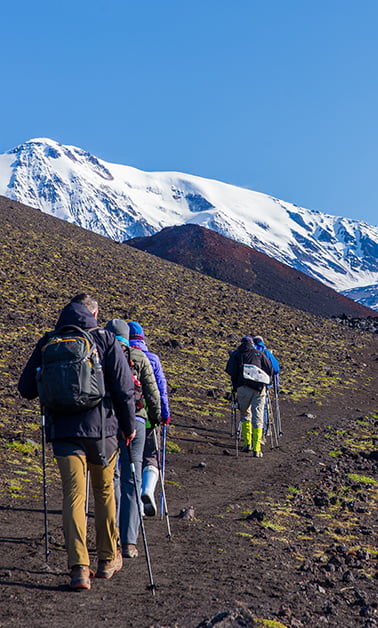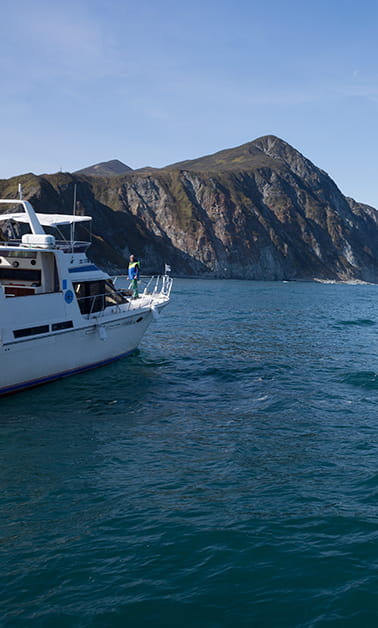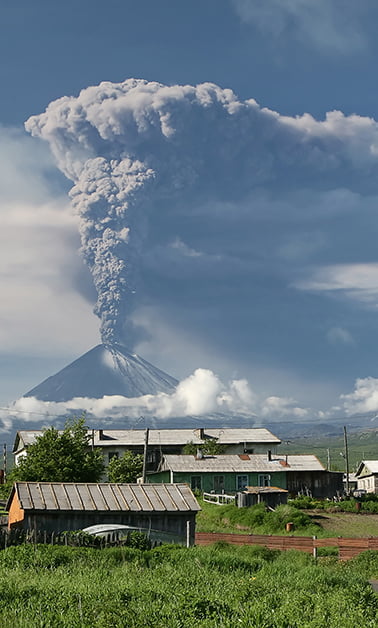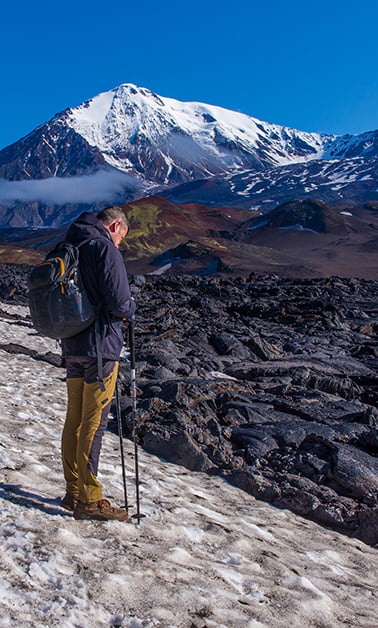
Esso village
The Esso village in Kamchatka attracts with its wonderful microclimate, the beauty of the surrounding landscape and the interesting activities that take place here. There is a large outdoor swimming pool with thermal water in the middle of the settlement.
Among the remarkable places of Kamchatka, there is a small village of Esso, located in the central part of the peninsula. Two rivers merge here, and the settlement itself appeared in the caldera of an extinct volcano. Located on the highlands, surrounded by thermal springs, larch taiga, this village is an environmentally pristine corner of the Earth, where air and water endow with healing powers.
Why Esso is Attractive for Tourists
The charm of a small village irresistibly affects those who come here. Amazing purity of air, a specific mild flavor of water, an atmosphere of peace and goodwill surprise people. The usual state of the atmosphere is calmness; especially in winter, one can notice the pacifying silence, which is unusual for urban residents. It has a dry microclimate and many sunny days. Esso is very beautiful in winter and summer. The surrounding mountain landscape resembles alpine views.

Right in the middle of the village, there is a large outdoor pool with thermal springs, which does not freeze even in cold weather. Someone is always swimming here. Hot springs are geared not only for healing purposes but also for growing vegetables and berries (including strawberries) in greenhouses and for heating homes.
The village was officially named Esso in 1932. They believed that this word is the name of the Bystraya River in Even or the distorted "isag", which means larch. However, linguists do not agree with such interpretations. According to the latest version, the name of the village came from the Koryak "echot", i. e. flooring from rods in the snow. Life in Esso runs slowly. There is a developed infrastructure with a post office, a bank, schools (including a music one and a craft school), a kindergarten, a winter sports complex, a bus station, and an airfield. There is a waste recycling plant, as well./p>
On the outskirts of the village, along the right bank of the Uksichan, hot springs burst forth out of the earth. Their temperature reaches 65 above Celsius. The composition of water is sulfate, calcium, and sodium.

Ethnographic Museum in Esso
In this small settlement, there are two unique museums. Ethnographic Museum was opened in 1988 and is dedicated to the culture of the indigenous peoples of Kamchatka. Its interesting and varied exhibits impress everyone who visited it. It is located both in buildings and in the open. The main part of the exhibits is located in a house built in the architectural traditions of the government office of the XVII-XVIII centuries. Cossack explorers lived, who mastered the Kamchatka Territory, lived in such burgs. In addition to the government office, there is a specially built defense tower, a Koryak semi-basement dwelling, and a booth, an exhibition hall in the museum.
Koryak dwelling was built in 2003 and is a reconstruction of the historical object of the XIX century. Since time immemorial, Koryaks lived in such houses, the peculiar form of which is reflected in the museum version.
In the government office, there is a detailed exposition devoted to the Evenki culture. Here, you can see the rites and traditions of these people, see how people lived, what they ate, what they wear. The shamanistic staff creates a strong impression. These things contain the mysterious power of ancient magic. There are also musical instruments, as well as various artifacts, thanks to which you can get a good idea of Evenki culture. These items were collected from camps during several ethnographic expeditions.
The museum has a local history department, introducing the flora and fauna of the Bystrinsky District, which, due to its unique natural characteristics, is included in the UNESCO World Heritage List. In the exhibition hall, you can see samples of the applied art of Kamchatka masters. These products are created from bone, wood, and fur; bead sewing is a popular element of their decoration. Souvenirs are sold right there.
Museum workers do all their best to present the museum in the most favorable light. During the excursions, they use slide shows, there are special places for memorable photos, and there are concerts of folk ensembles in the museum (you should make a special order). Museum visitors can visit the real bone carver workshop and get a wood carving master class.
Another popular museum in Esso is entirely dedicated to bears. This animal is the master of Kamchatka, which has totemic significance for local peoples. The Bear Museum was founded in 1999 at the library. Now, it occupies one small room though the exposition is located outside it, as well, in the courtyard, where there are wooden sculptures. A large exhibit, a stuffed bear, attracts attention. There are skulls and a cast of a bear’s footprint, a lot of various exhibits dedicated to the main hero. The photo department is also interesting; the taliped is captured from all angles and in different situations. There are books, albums, videos about bears – you can see all this in the museum.

Esso in Winter
Winter in the village is a time of interesting events and pleasant pastimes, so many people come here at this time of year. Frosts are not crackling; the proximity of the ocean softens the climate. The average temperature is approximately 16 above Celsius, the coldest month is January with 18 below zero. Fans of winter entertainment will find a variety of activities here.
A feature of these places is non-freezing thermal springs. The natural pool with hot water does not cool even in severe frosts. Bathing in it in the winter is an exotic, incomparable experience. There are snows all around, the majestic nature as if frozen in white hibernation and in the middle of an open reservoir, people are happily splashing – this picture is a reality in Esso.
For those who wish to ride the tundra by snowmobiles, such entertainment is also available. Fans of hunting (with hunting license) can try to get hares, partridges, foxes. There is a hunting lodge at a distance of 25 km from Esso.
In winter, there are two interesting events in Esso; many tourists plan their arrival for these dates. It is about the Reindeer Herder's Festival and Beringia dog sled race. Usually, they are held at the end of February or in March, which is a real winter month here.

Reindeer Herder's Festival
This is an annual holiday with a long-standing tradition. Reindeer herders not only from neighboring villages come here; guests come from far away. They gather in a large circle and discuss their affairs and prospects for reindeer husbandry. Officials always come to the holiday, as well; everything is well-managed and everyone works in unison. People have a tremendous time. According to ancient traditions, the ceremony of offering to the fire Ulekich is the first part of the holiday, then an Evenki yurt is put up and anyone can enter as a guest.
The holiday is combined with competitions in traditional northern sports: throwing a chout (lasso made of deerskin) on a harray (long pole used to drive a team of reindeer), running with a stick in the mountains, jumping over sledges, throwing an ax, triple jumping with simultaneous kicking off with two legs. Competitions are held in the gym of the local school or in the open air. An integral part of the holiday program is the reindeer sleigh race. Usually, about a dozen sleds are involved, the show is exciting and gambling. There are National wrestling competitions, as well. Spectators gather in a circle, inside, there are wrestlers. Before they close, they rub with snow.
In addition to the sports component and the exchange of experience, Reindeer Herder's Festival is also a festival of folk art. National ensembles perform; handicrafts are sold. Guests treat themselves to tea with flatbread and shurpa. The fun lasts up to three days.

Beringia Sled Dog Race in Kamchatka
The traditional dog sled race Beringia dates back to 1990. Then the magazine “Northern vast expenses” first came up with such an initiative, secured the support of the All-Union Fund of the Peoples of the North, Siberia and the Far East and organized the first competition. There were only eight participants, and they covered 250 km. The following year, the length of the route was the largest in the history of racing – 1,980 km, which was started in the Guinness World Records. After that, the length of the route was established at 1,100 km.
The feature and attractiveness of Beringia is that there is no age qualification. Elderly mushers (dog team drivers) also participate; to see the work of the experienced people is a good reason for younger people to adopt centuries-old dog management techniques. Animal participants are not specially bred sports dogs. They are ordinary northern dogs that continue to work at other times, as their predecessors have been done for centuries in these parts. However, during the competition, dogs have to overcome almost double distance per day compared to their usual way.
The route runs along the coast of the Sea of Okhotsk through the Sredinny Range to the east. On the racetrack, competitors visit 12 villages and towns, including Esso. In each locality, a meeting of mushers becomes a holiday – people dress up in national costumes and arrange concerts of ethnographic groups. Beringia participants do not just compete, the race also has the practical meaning as books, school and sports equipment are delivered to the settlements. Dog teams overcome mountains and tundra, cross numerous rivers until they reach the finish line.

Summer Holidays in Esso
In summer, this corner of Kamchatka is no less interesting. All the unique beauty of the region appears in the summer period in all its glory. Therefore, it is recommended that at the peak of this season (July-August) you take care of housing in advance by booking a place in a hotel or by agreeing with the owners of private houses that rent rooms.
Summer weather is mild, with average June temperatures of 8.5 above Celsius, July – 12.4 above zero, August – +11.0 °C. But there are also much hotter days, up to +30 °C.
For tourists, there are special trails around the village along which you can walk or ride on horses. Such routes last from one to four days. Natural attractions in the most beautiful surroundings make such trips memorable. After climbing the extinct volcano Olengende (almost 2 km high), you can admire the stunning view. The distance from the village to the Sopka is 10 km. Eight kilometers away, there is Alney – the peak of the Sredinny Range (2600 m).
There are mountain lakes Ikar and Galyamiki. Klyuchevskaya group of volcanoes is relatively close to Esso, as well. Ascending Plosky Tolbachik is a favorite activity of tourists who have arrived here. They go where the past eruptions left their fantastic traces resembling alien landscapes.
Water sports enthusiasts have an opportunity to raft along the Bystraya River. They have enough opportunities to show their skills and courage – the Bystraya has 12 thresholds of varying degrees of difficulty, you can overcome some of them only under the guidance of experienced masters. The river is also famous for its fish, so fans of fishing will feel here like in paradise.

How to Get to Esso
It takes 7-10 hours with stops to get here from Petropavlovsk-Kamchatsky by car. The road is long, not smooth, but stunning views around will be the completion of this inconvenience.
The fastest way to get to the village is by helicopter MI-8; the flight lasts 2 hours. From the air, the magnificence of the opening picture seems fantastic. However, the price of such a trip is very high.
Tourists can get the necessary information in the visitor center. For your convenience, there are signs pointing to the main attractions throughout the village. In the center of the village, there is a large map, which clearly shows all the places worth visiting and routes around the neighborhood. There are several hotels in Esso; their price range is different. Many tourists stay in private houses both because it is cheaper and because often there are no more places in hotels. After all, this small peculiar village in Kamchatka attracts people, and having been here once, they return again and again.

Popular tours with Kamchatkaland
Ready-made packages for your travel and vacation in Kamchatka






